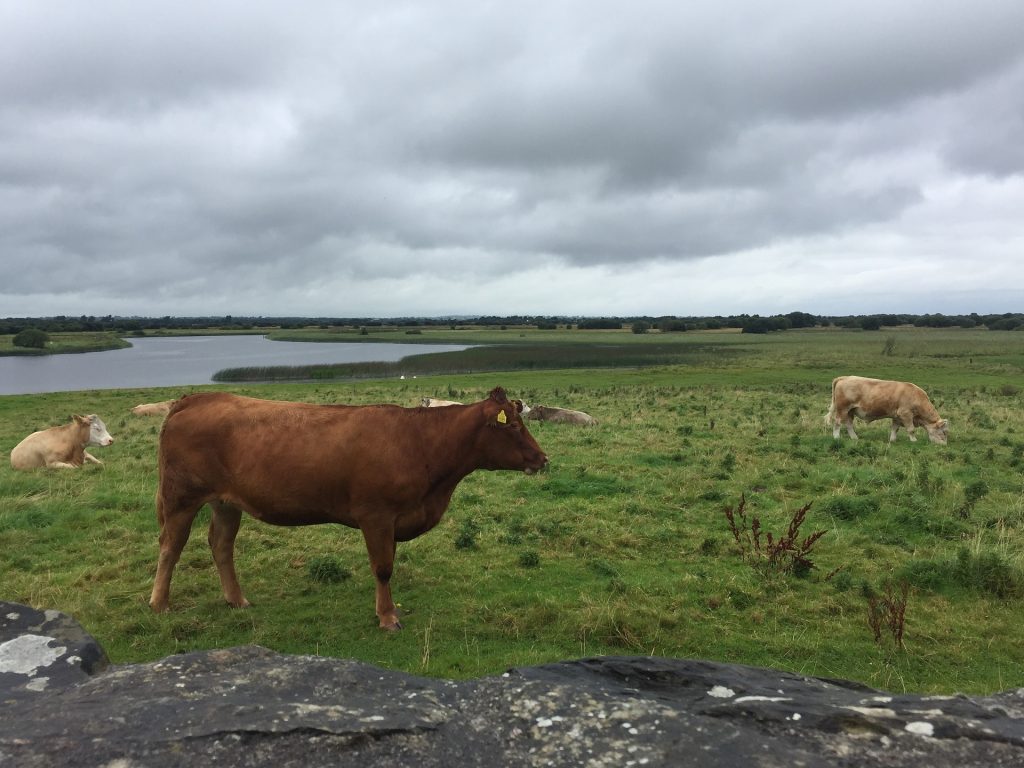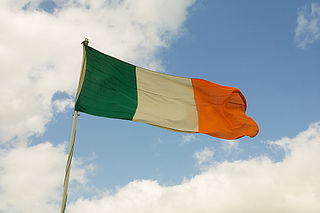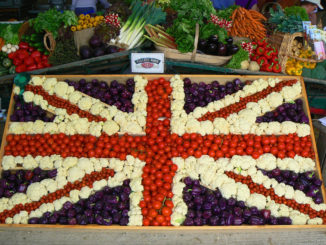
Alan Matthews runs the CAPreform.eu blog, one of the best and most consistent sources of up to date, detailed analysis of all things CAP. Here we present part two from an interview between our own Oliver Moore and Professor Matthews. Part one was broad and introductory, looking at what the Commission has proposed and potential pitfalls. Part two below is more specific and related to Matthews’ home country of Ireland.
OM: Broadly speaking, what are the indications from Ireland regarding the level of ambition for a CAP reform?
AM: I would be quite impressed by the rhetoric coming from the minister and from Kildare Street, I think the message that we need a greater level of climate and environmental ambition in the next CAP has dropped there. The political economy of redistributing payments in Ireland is another matter – we know all the problems there from the last CAP reform, and those haven’t gone away. Its made more difficult now by the huge dualism which has become more evident – it has always existed, the gap between the dairy people and the drystock sector – but that dualism has just grown so much during the last few years that any redistribution is going to be seen through that lens, which is going to make it more difficult.
OM: What big decisions would you like to see made regarding CAP?
AM: I’d like to see the maximum possible transfer of funds from pillar 1 to schemes in Pillar 2. I’d like to see Ireland expand the agri-environmental and climate measures because in Ireland, these schemes are over-subscribed. Farmers want to participate, but these schemes are quickly closed, so farmers can’t join. There will be much greater scope under the proposals to transfer funds from pillar 1 to 2. I would hope that the Irish government would make use of that option – there are political considerations – but that would be the first thing.
Then, in terms of the design of the schemes, we need to give some credit to the Department here. In terms of design, we have been leading in the area of results-based payments. With environmental schemes, there are two options. You can pay farmers for carrying out practices, and you control whether these have been followed or not. Sometimes those practices might not make a huge amount of sense on an individual farm, just with the way the farm is set up, so it’s not always the best way to get the environmental outcomes you need.
But with results based schemes, you try to set specific targets, and you leave it up to the farmer to decide how to achieve them. There’s much more flexibility and buy in among farmers. There is good experience from several pilot schemes, so a second thing I’d like to see is those rolled out much more widely. Its not going to suit every environmental issue, but to the extent that we can make use of results-based schemes, we should.
The EIP – European Innovation Partnership – has worked well in Ireland. We’ve now had 3 tranches of EIP’s to set up operational groups. I think the idea behind these is terrific. It helps to develop farmer champions for a particular issue. Farmers are much more likely to want to learn from their peers rather than outsiders. So hopefully the Department does see these as pilot exercises which can be scaled up for the next CAP.
OM: Agri-food makes up an exceptionally high proportion of Ireland’s emissions. What can or should be done about this?
AM: You have so many beef farmers who are, as it is, losing money. It’s not profitable for them. Yet those animals are contributing to our emissions. From 2021 on, this will cost us money, as we’re exceeding our EU targets. Those emissions will cost the exchequer. It’s wrong to think of it as fines: what the EU have put in place is a system whereby you go out into the market and purchase those allowances. So its not fines, rather its paying another member state for the purchase of allowances to exceed our permitted targets.
At the moment, there are a lot of allowances around, as the east European countries had generous targets which they’ve easily met. But as we move towards 2030 that’s not going to be the case – these allowances will become more expensive. So some way to reduce herd size would seem to be a win win situation. You might offer these farmers a scheme with an environmental dimension, linked to that a reduction in stocking densities, in return for an additional payment. So their income could be increased, or at least maintained, while at the same time overall emissions are reduced.
I’m reinforced in my view by a very interesting UK report on the economics of hill farming. They looked at farm accounts and basically concluded that nearly all these farmers could improve their financial position by reducing their stocking rate. The title of the report is ‘Less is More’. It states that hill farmers should go back to a carrying capacity which could be based on natural grazing of the area with no use of artificial inputs. So you’d save on inputs and have a lower stocking density. Now obviously this would need to be targeted at a particular group of farmers who aren’t likely to be making money at present, and who’d be willing to re-orientate their enterprise towards a low input low output system.
OM: What’s your thinking on the herd size in Ireland, and its relationship to Ireland’s climate targets?
AM: Its not simply the case that we have to reduce emissions therefore we must put a physical limit on the size of the herd. Any industry has to take responsibility for all of its impacts. Farmers are quite prepared to pay for their feed, fertilizer, veterinary inputs, at the moment, but their impacts on the environment are somebody else’s problem, be it ammonia emissions, nitrates in water or Greenhouse Gas emissions. So somehow we’ve to find a way whereby expansion, or even existing production, takes these externalities fully into account. And that’s going to cost money, and means a herd that doesn’t expand as is planned, and probably a herd that’s smaller than it is today.
But rather than impose an absolute limit, what I’d like to see is these costs internalised either via regulation or some kind of bonus/malus system. So if you can show you are sequestering carbon, in soils or in trees via forestry, agroforestry or some other system, you get credit for that, and your emissions are offset against that. And if you’ve net emissions you should be paying something for that.
OM: The all party committee on climate change – JOCCA – recommended farm diversification. So that’s more cropping including horticulture and more mixed farms. However the climate action plan that was eventually adopted by the government downgraded diversification to 3rd level training and forestry. What’s your thinking on diversification?
AM: I’m not an agronomist, but my understanding is that climatically and for other reasons, its extremely difficult to make a go of these more tillage-based enterprises in Ireland. During the emergency in the 1940s, there was compulsory tillage, but it disappeared immediately after the war as it wasn’t profitable. Obviously you do have some very outstanding individual instances of people who make a go of horticulture in Leitrim, Galway and the west. With the level of management input into those enterprises, those individuals could probably make a go of anything.
However I’m not sure whether these are replicable examples for a wide swath of Irish farmers. So I’m skeptical of the advice that this could be a way forward. There may be soil fertility advantages to rotation, and a circular economy type of argument to be made, so where it can be done it should be encouraged, but in Irish circumstances, looking at our history I’m not sure diversification is ever going to be widespread.
OM: What role do you see for coops in agri-food?
AM: Working together through discussion groups, producer groups and farmer-owned processing facilities seems to bring obvious advantages but the Irish experience seems very patchy. It is interesting to reflect on the very different penetration of co-operative approaches among beef and dairy farmers in Ireland and the reasons for this. Thus, dairy farmers were quick to embrace the potential of cooperative organisation, and still today maintain control of the largest coops, but also are more willing to ‘cooperate’ together in the form of discussion groups, knowledge transfer groups, etc. All things that are not necessarily characteristic of beef farmers.
One possible explanation might be rooted in differences in the way the two enterprises are run in Ireland. For dairy farmers, there was a clear economic incentive to come together to create cooperative creameries, all farmers could benefit from the greater efficiency and higher quality of butter that resulted.
For beef farmers, with our system of moving cattle from farm to farm several times during their lifetime, the return (if any) came much more from trading than it did from management. You made money to the extent that you could exploit the guy you were buying cattle from or selling cattle to. Beef farmers are thus inherently in competition with each other which undermines any incentive for cooperative action.
This is a strong over-generalisation, of course, but how else to explain the total failure of the cooperative movement either in the form of producer groups or processing coops to take root among beef farmers in Ireland?
Read part one
More from ARC2020 on Ireland
Farm-2-Fork 2030: A Truly Green Farming, Food and Rural Vision for Ireland
Farm Diversification – Agroforestry and Agritourism in Ireland




